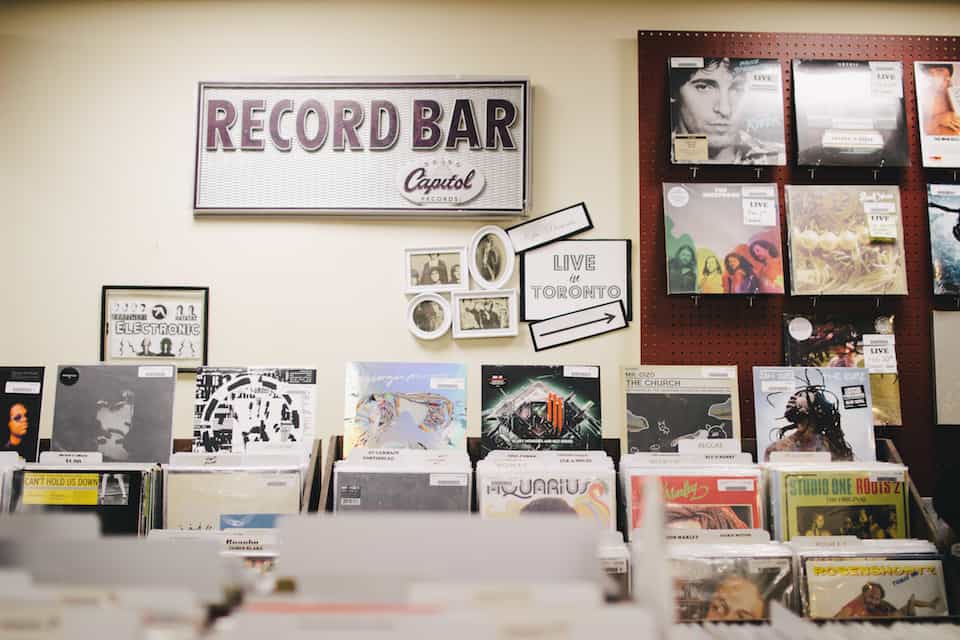[dropcap]T[/dropcap]he invention of digital recording left in its wake a tremendous and lasting after-shock. On October 1, 1982, Billy Joel’s sixth studio album, 52nd Street, became the first album to be released commercially on a compact disc. 52nd Street was not a new album; its public debut occurred in 1978 as a vinyl press, which was the standard format in mass consumption at the time. By statistical comparison, digital audio was expected to be superior to analog; compact discs were meant to strike the consumer as the more viable investment, considering that discs were resilient to the degradation that plagued the overplayed record. This change intended to render the costly inconvenience of vinyl pressing obsolete, lower the price of purchasing music, and allow the industry to flourish.
Ever since the compact disc’s introduction in the ’80s, the music industry has taken a turn towards the portability and accessibility of digital audio formats. This notion flourished across various platforms; it affected the performance, production, and collection of music as each gradually evolved to incorporate the more affordable industry standard. Analog tools, such as synthesisers, compressors, and vinyl, had proven to be heavy, expensive, and inconvenient, especially for the amateur studio dweller. It was this mentality that caused vinyl to recede to cult value, even in a nightclub setting.
That being said, it’s natural for all artistic markets to undergo changes within a few years, especially if the market is over-saturated with a specific trend. Circuits that were once dominated by commercially viable genres are maturing alongside the audience’s slowly sophisticating tastes. Producers like Four Tet, Floating Points, and Bonobo —who recently performed in Toronto — are compiling their set lists exclusively with vinyl. The tremendous critical acclaim of the old-fashioned tradition is leading many to reconsider a return to vinyl, whether as a listener or performer.
David Tanton is a former U of T student and electronic music producer who publishes his content under the moniker, “Rhoda”. He feels that when streaming platforms like “Spotify and Pandora reign supreme,” listeners “get caught in genres” that they are comfortable with, leaving them to “go back to the same artists time and time again.” It is useful to note that digital stations, as well as many online music vendors, take sponsor money from labels to ensure that certain artists rest at the top of the ‘most listened to’ list. Vinyl is no longer “much of a cult thing as it is a hobby” to Tanton, and he notes that the fun lies in wandering into “record shops and [walking] out with armfuls of cheap bin records…hoping to find lost audial gems.” As per history, “It’s a sonic investment to say the least.”
Given the investment that many are willing to make in vinyl over other formats of music, such as streaming subscriptions or CDs, it’s fair to ask whether or not vinyl does, scientifically, sound better.
Mariana Hutten-Czapski is a mixing and mastering engineer who holds a bachelor’s degree in music technology, sound design, and music composition from Concordia University. Her alma mater allowed her to cultivate an expertise in mastering stereo and multi-track recordings, and software tools used to process analog and digital sounds. While a good listening experience is often subjective, Hutten-Czapski notes that “humans are more sensitive to the frequencies around 2-4kHz.” She notes that analog formats such as vinyl do not necessarily eliminate these frequencies, but they end up seeming “more subtle than with digital technology.” The sampling rate is infinite — in other words, the relatively lossless audio that analog is revered for — sound “softer [and] more pleasing” than the distortion caused by low sampling rates characteristic of digital recordings. iTunes and other major music players tend to play sound in either 256 or 320kbps MP3 format, which can cause a certain degree of wear to the sound.
A similar form of distortion occurs with vinyl formatting, however; the “way the needle runs on the grooves produces a pleasing distortion,” thereby tricking the brain into hearing more.
According to Nick Koppel the heir to a 38-year-old Toronto family business by the name of Kops Records, there is a wider range of genres and discographies available in hard recording than other formats. Koppel observes that “As music shrunk to bytes, consumers craved the tangible.” The fact that “records can play without electricity: combine plate, string, nail, cup, hamster, and wheel,” may sway listeners toward the investment that guarantees a material possession, rather the investment that left them with a digital license.
The quality and novelty of one’s listening experience remains a core focus of the music industry. This coaxes listeners into overlooking the fact that “full catalogues are seldom available, and favourite albums never re-pressed,” as limited pressing plants produce dwindling catalogues. In 2014, more than 13 million LPs were sold in the United States. Canadian vinyl sales that year increased by 71 per cent, and the total number sold in Canada surpassed 400,000 records.
This unexpected renaissance of vinyl, which faded with the arrival of compact discs in the 1980s, is proving that, while vinyl may lack the immediacy of digital media, ownership and experience rest as the redeeming qualities of the record. As the vinyl gold rush continues, it appears as though this cast of mind will continue to sustain collector culture over the years.


